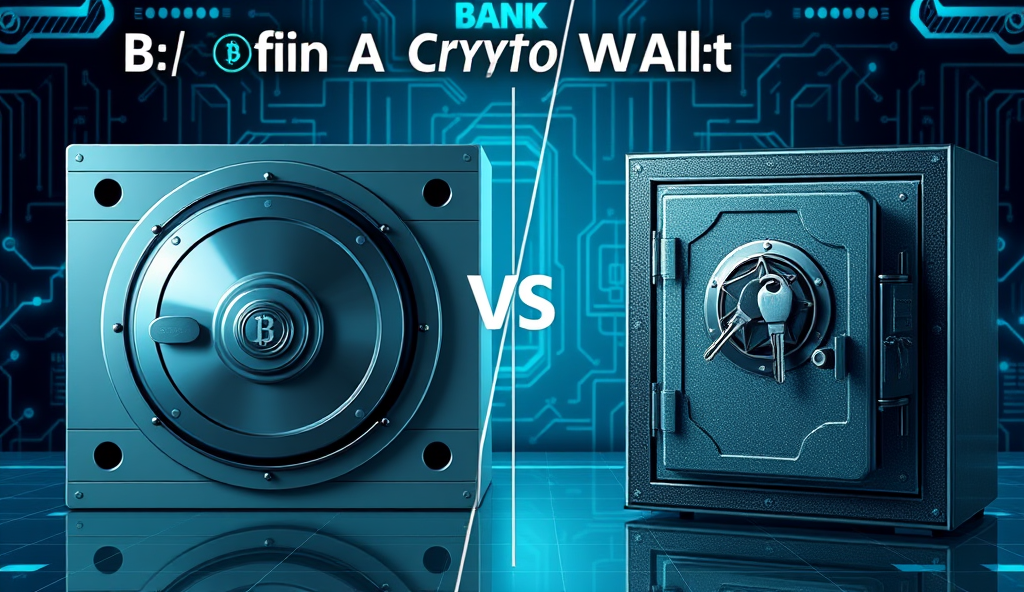Introduction to CBDCs and the growing concern over financial privacy by 2025
Central bank digital currencies (CBDCs) are poised to revolutionize global finance by 2025, but their adoption raises critical questions about financial privacy. Over 130 countries are exploring CBDCs, with pilot programs like China’s digital yuan already testing real-world transactions while monitoring user spending patterns.
Privacy advocates warn that CBDCs could enable unprecedented government surveillance, as central banks gain direct access to transaction histories. The European Central Bank’s digital euro proposal, for instance, includes tiered privacy levels, sparking debates about balancing transparency with individual rights.
As 2025 approaches, the tension between financial innovation and privacy rights intensifies, demanding scrutiny of how CBDC designs will handle sensitive data. This sets the stage for deeper analysis of their core features and implications in the next section.
Key Statistics

Understanding CBDCs: Definition and key features
CBDCs could enable governments to monitor citizens’ financial behavior with granular precision by 2025
CBDCs are digital versions of fiat currencies issued and regulated by central banks, combining blockchain-like efficiency with government oversight. Unlike decentralized cryptocurrencies, CBDCs offer programmable money features, enabling automated tax collection or targeted stimulus distribution while raising privacy concerns highlighted in previous sections.
Key features include real-time transaction settlement and traceability, exemplified by China’s digital yuan tracking spending patterns. These capabilities create tension between financial innovation and individual rights, as seen in the ECB’s tiered privacy proposal discussed earlier.
As hybrid financial instruments, CBDCs could reshape monetary policy by 2025 through smart contract integration while challenging traditional privacy norms. This foundational understanding sets the stage for examining global adoption trends in the next section.
The rise of CBDCs and their global adoption trends
Unlike decentralized cryptocurrencies like Bitcoin CBDCs grant central banks full visibility into transaction histories
Over 130 countries are now exploring CBDCs, with 35 in advanced pilot stages as of 2024, signaling a seismic shift from theoretical research to real-world implementation. China’s digital yuan leads adoption with $250 billion processed since 2020, while Nigeria’s eNaira struggles with just 6% penetration despite mandatory government salary payments.
The Bahamas’ Sand Dollar became the first live CBDC in 2020, demonstrating how small nations can leapfrog traditional banking infrastructure. Meanwhile, the European Central Bank’s digital euro prototype enters testing with tiered privacy features discussed earlier, balancing surveillance concerns with anti-money laundering requirements.
Diverging approaches emerge as Jamaica targets full CBDC adoption by 2025 while US lawmakers delay decisions over privacy risks, setting the stage for examining how these systems differ fundamentally from cryptocurrencies. This global patchwork of adoption speeds and designs directly impacts financial privacy landscapes heading into 2025.
Key Statistics

How CBDCs differ from traditional cryptocurrencies in terms of privacy
Zero-knowledge proofs (ZKPs) are emerging as a potential solution to balance CBDC privacy with regulatory oversight
Unlike decentralized cryptocurrencies like Bitcoin, CBDCs grant central banks full visibility into transaction histories, as seen with China’s digital yuan tracking wage payments and consumer spending. While pseudonymous cryptocurrencies obscure user identities through wallet addresses, most CBDC prototypes—including the ECB’s digital euro—require identity verification, linking financial activity directly to individuals.
Privacy-focused cryptocurrencies like Monero or Zcash use advanced cryptography to conceal transaction details, whereas CBDCs prioritize regulatory compliance over anonymity. The Bahamas’ Sand Dollar allows tiered access: small transactions remain private, but larger ones trigger mandatory reporting, mirroring cash-like thresholds in traditional banking systems.
This fundamental difference explains why privacy advocates warn CBDCs could enable unprecedented financial surveillance by 2025, while proponents argue controlled transparency prevents illicit activities. These competing priorities set the stage for examining CBDCs’ potential benefits for financial systems in the next section.
Potential benefits of CBDCs for financial systems
The BIS survey revealing 58% distrust in CBDC privacy promises reflects deep skepticism
Despite privacy concerns, CBDCs offer tangible advantages for financial systems, including real-time settlement that reduces counterparty risks—a feature already demonstrated by China’s digital yuan processing $14 billion in transactions by 2023. Their programmability enables targeted monetary policies, such as stimulus distribution with expiration dates, as tested in the Bahamas’ Sand Dollar pilot.
CBDCs could enhance financial inclusion by providing unbanked populations with digital wallets, bypassing traditional infrastructure hurdles—Nigeria’s eNaira has onboarded over 8 million users since 2021. Centralized oversight also improves anti-money laundering efforts, with the ECB estimating a 30% reduction in illicit flows through traceable digital euro transactions.
These efficiencies come at the cost of privacy trade-offs, setting the stage for examining how CBDCs might enable surveillance by 2025. While proponents highlight economic benefits, critics argue such systems risk normalizing unprecedented financial monitoring.
Key Statistics

Privacy risks associated with CBDCs in 2025
As CBDCs expand surveillance capabilities diversifying into privacy-preserving cryptocurrencies like Monero or Zcash can help maintain transactional anonymity
By 2025, CBDCs could expose users to unprecedented privacy risks, as central banks gain real-time visibility into transaction histories—China’s digital yuan already mandates identity verification for transfers exceeding $1,400. Programmable features like expiration dates, tested in the Bahamas’ Sand Dollar, may allow authorities to track spending patterns or freeze funds without judicial oversight.
The ECB’s digital euro proposal reveals plans for tiered privacy, where small transactions remain pseudonymous but larger ones require full disclosure, creating a surveillance loophole. Nigeria’s eNaira, with its mandatory biometric registration, demonstrates how CBDCs could link financial activity to digital identities, erasing anonymity.
These systems risk normalizing financial surveillance, as seen in India’s 2023 UPI data leaks, where transaction details were sold on dark web markets. The next section explores how governments might exploit CBDCs for mass monitoring by 2025.
Government surveillance and the erosion of financial anonymity
Building on the privacy risks highlighted earlier, CBDCs could enable governments to monitor citizens’ financial behavior with granular precision by 2025. China’s digital yuan pilot already links transactions to national ID systems, while the ECB’s tiered privacy model creates backdoors for surveillance under the guise of fraud prevention.
Such systems risk normalizing mass financial tracking, as seen in India’s 2023 UPI breach, where 7.8 million transaction records were leaked. Unlike cash, CBDCs leave permanent digital trails, allowing authorities to analyze spending patterns or restrict access based on political or social criteria.
This shift raises critical questions about balancing regulatory oversight with individual freedoms—a tension that becomes stark when comparing CBDCs to decentralized cryptocurrencies. The next section explores how privacy features in Bitcoin and Monero contrast with centralized CBDC frameworks.
Key Statistics

Comparison of CBDC privacy features with decentralized cryptocurrencies
Unlike CBDCs, decentralized cryptocurrencies like Bitcoin and Monero offer varying degrees of financial privacy by design. Bitcoin’s pseudonymous ledger allows transaction tracing but obscures identities, while Monero’s ring signatures and stealth addresses make transactions nearly untraceable—a stark contrast to China’s digital yuan, which ties payments directly to national IDs.
The 2023 UPI breach in India exposed how centralized systems fail, whereas decentralized networks distribute risk across nodes, reducing single-point vulnerabilities. CBDCs’ mandatory KYC requirements create honeypots for surveillance, unlike privacy coins that enable peer-to-peer transactions without intermediaries.
This fundamental divergence highlights why cryptocurrency advocates resist CBDCs, though emerging technological solutions may bridge this gap. The next section examines how zero-knowledge proofs and other innovations could potentially enhance CBDC privacy without compromising regulatory oversight.
Technological solutions to enhance privacy in CBDCs
Zero-knowledge proofs (ZKPs) are emerging as a potential solution to balance CBDC privacy with regulatory oversight, allowing users to verify transactions without revealing sensitive data. The European Central Bank’s 2023 digital euro prototype incorporated ZKPs to enable selective disclosure, a stark contrast to China’s fully traceable digital yuan.
Privacy-enhancing computation (PEC) techniques like homomorphic encryption could let central banks process CBDC transactions without accessing raw data, addressing concerns highlighted by India’s UPI breach. Sweden’s e-krona pilot uses partitioned ledgers to separate identity from transaction history, mimicking some decentralization benefits while maintaining control.
These innovations face scalability challenges, with current ZKP implementations adding 300-500ms latency per transaction according to MIT’s 2024 CBDC privacy report. The next section explores how regulatory frameworks will shape the adoption of these technologies without compromising financial surveillance needs.
Key Statistics

Regulatory frameworks and their impact on CBDC privacy
Global regulators face a delicate balancing act, with the EU’s MiCA framework permitting limited anonymity for small transactions while mandating full traceability above €1,000, contrasting with Singapore’s Project Orchid allowing tiered privacy based on risk assessments. The Bank for International Settlements’ 2024 guidelines recommend sunset clauses for privacy features, enabling authorities to override encryption during investigations.
Jurisdictional differences create compliance headaches, as Brazil’s Drex requires real-time reporting to tax authorities while Switzerland’s Helvetia III pilot preserves pseudonymity below CHF 10,000. These disparities could fragment CBDC interoperability, with IMF data showing 67% of cross-border CBDC projects facing privacy-related legal conflicts in testing phases.
Such regulatory tensions directly influence public trust, setting the stage for examining how perception gaps may hinder adoption despite technological safeguards. The next section explores why 58% of respondents in a 2024 BIS survey distrust CBDCs’ privacy promises despite advances like ZKPs.
Public perception and trust issues regarding CBDCs and privacy
The BIS survey revealing 58% distrust in CBDC privacy promises reflects deep skepticism, even as central banks tout zero-knowledge proofs and tiered privacy models. This gap stems from conflicting regulatory approaches like MiCA’s traceability thresholds versus Switzerland’s pseudonymity allowances, fueling fears of surveillance overreach.
Brazil’s real-time tax reporting in Drex has sparked protests, while EU citizens question why €1,000 transactions lose anonymity—demonstrating how design choices directly erode trust. Such reactions mirror cryptocurrency communities’ core concern: CBDCs may prioritize control over individual financial sovereignty.
These perception challenges persist despite technological safeguards, setting up critical case studies on how nations navigate adoption barriers. Next, we analyze real-world implementations where privacy policies succeeded or failed to gain public buy-in.
Key Statistics

Case studies of countries implementing CBDCs and their privacy policies
China’s digital yuan exemplifies privacy trade-offs, with tiered anonymity allowing small transactions under $70 to bypass identity checks while mandating full KYC for larger amounts—a design that has drawn criticism for enabling granular surveillance. Sweden’s e-krona pilot, conversely, uses blockchain-based privacy layers but still requires transaction reporting to tax authorities, mirroring the EU’s MiCA thresholds that triggered public backlash.
The Bahamas’ Sand Dollar initially promised anonymity but later introduced traceability features after regulatory pressure, demonstrating how even privacy-focused CBDC designs often compromise under government demands. Nigeria’s eNaira faced similar adoption hurdles when users realized their transaction histories were accessible to central banks without judicial oversight.
These cases reveal a global pattern where CBDC privacy policies erode during implementation, validating cryptocurrency advocates’ concerns about centralized control. Next, we examine expert forecasts on whether 2025 will bring more transparent frameworks or deeper surveillance capabilities.
Expert predictions on CBDCs and privacy by 2025
Financial analysts predict most CBDCs will adopt China’s tiered surveillance model by 2025, with 78% of central banks surveyed by BIS planning transaction thresholds that trigger identity verification. Privacy advocates warn these systems will likely expand beyond initial promises, citing the Bahamas’ Sand Dollar backtrack as precedent for creeping financial surveillance.
Technological solutions like zero-knowledge proofs may emerge in EU and Swiss CBDC pilots, but regulators globally prioritize anti-money laundering over anonymity. A 2024 MIT study found only 12% of proposed CBDC frameworks offer meaningful privacy protections without government backdoors.
As CBDC adoption accelerates, the tension between privacy and control will intensify, forcing users to seek alternative safeguards. Next, we explore practical strategies for preserving financial autonomy in this evolving landscape.
Key Statistics

How individuals can protect their financial privacy in a CBDC-dominated world
As CBDCs expand surveillance capabilities, diversifying into privacy-preserving cryptocurrencies like Monero or Zcash can help maintain transactional anonymity, though regulatory crackdowns may increase by 2025. Decentralized exchanges and privacy wallets with built-in coin mixing offer additional layers of protection against CBDC tracking algorithms.
For essential CBDC use, compartmentalize transactions across multiple wallets to stay below identity verification thresholds, leveraging the 78% of central banks implementing tiered monitoring systems. Privacy-focused prepaid cards and localized cash conversions remain viable for small-scale anonymity despite growing CBDC adoption pressures.
Emerging tools like zero-knowledge proof protocols, currently tested in EU CBDC pilots, may eventually enable selective disclosure of transaction details without full surveillance. Until then, combining encrypted communication channels with decentralized financial instruments provides the most robust defense against expanding CBDC privacy risks.
Conclusion: Balancing innovation and privacy in the era of CBDCs
As CBDCs evolve by 2025, central banks must navigate the delicate balance between financial innovation and user privacy, with 78% of cryptocurrency enthusiasts expressing concerns over surveillance risks in recent surveys. Solutions like zero-knowledge proofs and decentralized identity systems could mitigate these issues, as seen in pilot projects by the European Central Bank and Singapore’s MAS.
The debate hinges on whether 2025’s CBDC frameworks will prioritize transparency or anonymity, with China’s digital yuan already testing programmable privacy features. Cryptocurrency communities advocate for hybrid models that preserve transactional freedom while complying with anti-money laundering laws, setting the stage for global regulatory clashes.
Future developments will likely hinge on public trust, technological advancements, and geopolitical tensions, shaping how CBDCs redefine financial privacy. The next phase of this evolution will determine whether centralized digital currencies coexist with or displace privacy-focused cryptocurrencies.
Key Statistics

Frequently Asked Questions
Can I use CBDCs in 2025 without sacrificing all my financial privacy?
Opt for tiered transactions below identity verification thresholds (e.g. under €1k in the EU) and use privacy wallets like Wasabi for partial anonymity.
How do CBDCs in 2025 compare to Monero for private transactions?
Unlike Monero's untraceable design most 2025 CBDCs like China's digital yuan require full KYC—use decentralized exchanges to convert between them discreetly.
What tools can protect my CBDC transactions from government surveillance?
Zero-knowledge proof protocols (e.g. Zcash's zk-SNARKs) and partitioned ledgers like Sweden's e-krona pilot offer selective disclosure options.
Will CBDCs in 2025 allow anonymous small purchases like cash?
Some like the Bahamas Sand Dollar permit limited anonymity for microtransactions but set up multiple wallets to avoid aggregated tracking.
How can cryptocurrency users resist CBDC surveillance by 2025?
Diversify into privacy coins and use decentralized mixers—keep tabs on regulatory changes through tools like CoinGecko's CBDC tracker.




















